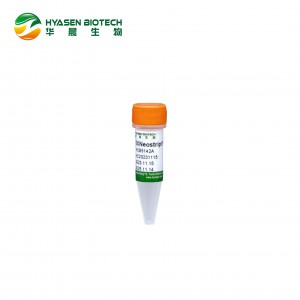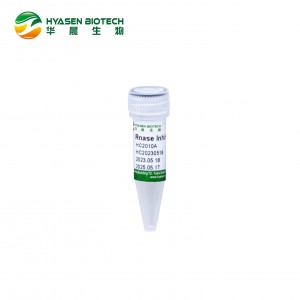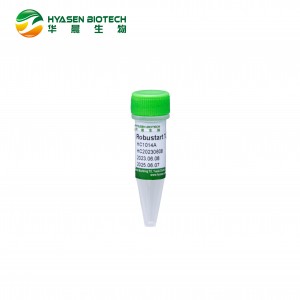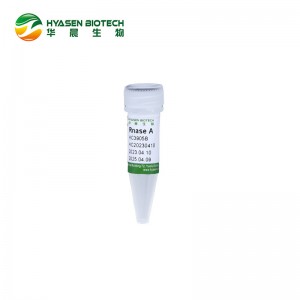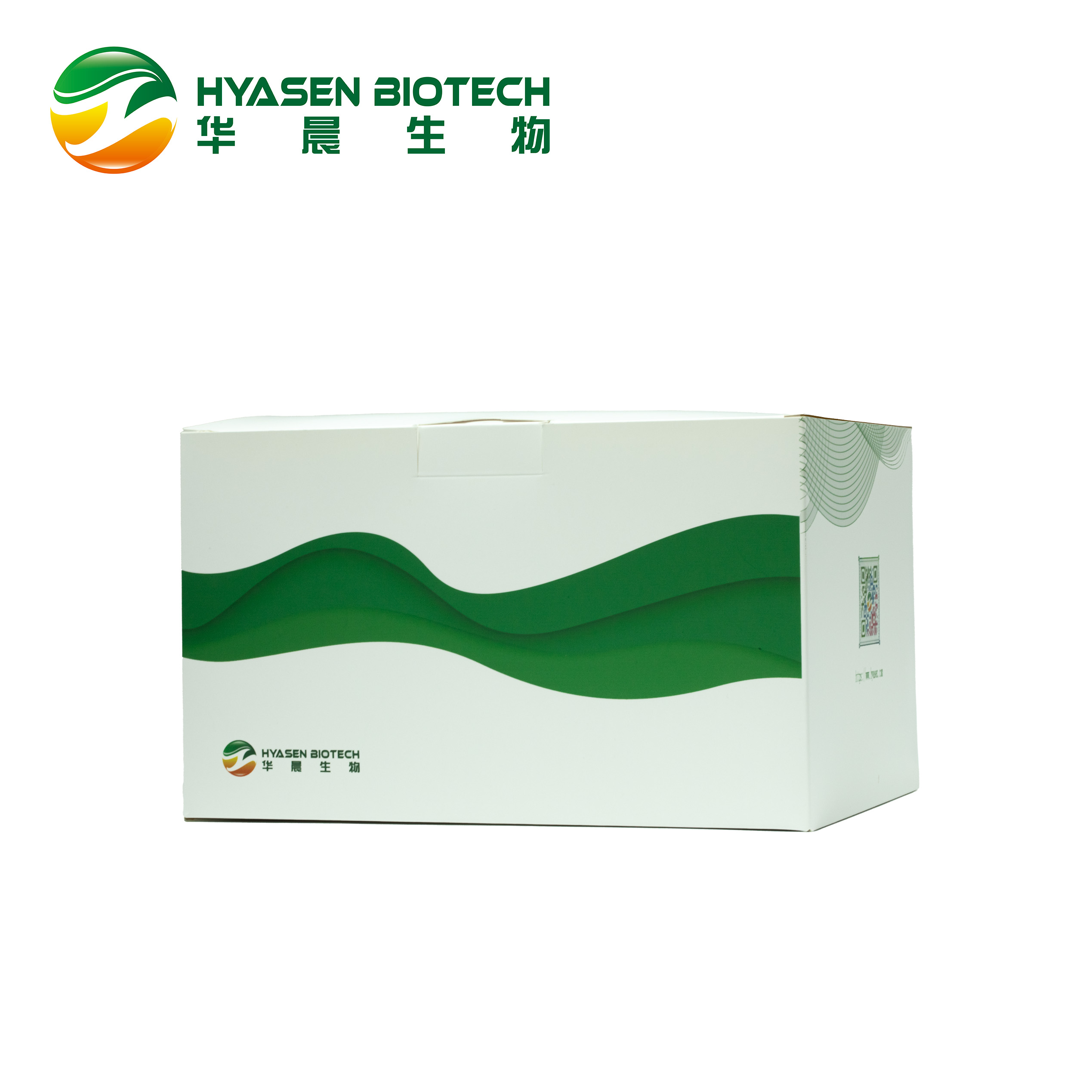
EndoFree Plasmid Maxi Kit
This kit is suitable for extraction from 150 – 300 ml of bacterial solution cultured overnight, using an improved SDS-alkaline lysis method to lyse the bacteria. The crude extract is selectively combined with a unique Endotoxin Scavenger and separated by centrifugation to remove endotoxins. Then,the silica gel membrane selectively binds to plasmid DNA in the solution under conditions of high-salt and low-pH. This is followed by addition of wash buffer to remove impuri- ties and other bacterial components. Finally, a low-salt, high-pH elution buffer is used to elute pure plasmid DNA from the silicon matrix membrane. The silica gel membrane employs special adsorption membrane, and the adsorption amount difference between the column and the column is very small and the repeatability is good. Phenol, chloroform and other toxic reagents are not required, and neither is ethanol precipitation steps. This kit can be used to rapidly extract 0.2 -1.5 mg of pure high-copy plasmid DNA, with an extraction rate of 80% -90%. The kit uses an unique process formula removes endotoxin, the content of endotoxin is extremely low and the cell transfection effect is excellent. The extracted plasmid could be directly used in enzyme digestion, PCR, in vitro transcription, transformation, sequencing and other molecular biology experiments.
Storage conditions
RNaseA should be stored at -30 ~ -15℃ and transported at ≤0℃ .
Endotoxin Scavenger can be stored at 2 ~ 8℃ for one month, stored at -30 ~ -15℃ for long-term storage and transported at ≤0℃ .
Other components should be stored at room temperature (15 ~25℃) and transported at room temperature.
Components
|
Components |
10RXNS |
|
RNase A |
750 μL |
|
Buffer P1 |
75 ml |
|
Buffer P2 |
75 ml |
|
Buffer P4 |
75 ml |
|
Endotoxin Scavenger |
25 ml |
|
Buffer PW |
2 × 22 ml |
|
Buffer TB |
20 ml |
|
FastPure DNA Maxi Columns ( Each in a 50ml Collection Tube) |
10 |
|
Endotoxin-free Collection Tube |
2 × 5 |
RNaseA: 10 mg/ml, used to remove RNA.
Buffer P1: bacterial suspension buffer, add RNaseA to Buffer P1 before first use.
Buffer P2: bacterial lysis buffer (containing SDS/NaOH).
Buffer P4: neutralizing buffer.
Endotoxin Scavenger: effectively remove endotoxin from the crude plasmid extract.
Buffer PW: wash buffer, add the stipulated volume of ethanol before first use.
Buffer TB: elution buffer.
FastPure DNA Maxi Columns: plasmid DNA adsorption columns.
Collection Tubes 50 ml: filtrate collection tubes.
Endotoxin-free Collection Tube: plasmid DNA collection tubes.
Prepared Materials
Absolute ethanol, isopropanol, 50 ml round-bottom centrifuge tubes and 50 ml endotoxin- free centrifuge tubes.
Applications
This product is suitable for large-scale extraction of plasmids from 150 - 300 ml of bacterial solution cultured overnight.
Experiment Process
1. Take 150 – 200 ml (no more than 300 ml) of bacterial solution cultured overnight and centrifuge at about 11,000 rpm (12,000 × g) for 1 – 2 min. Discard the supernatant and collect bacteria.
Δ When collecting more than 50 ml of bacterial solution, the bacteria can be collected by adding bacterial solution, centrifugation, discarding the supernatant and other steps in the same 50 ml tube for
multiple times.
2. Add 7.5 ml of Buffer P1 (please check whether RNaseA has been added to Buffer P1) to the centrifuge tube containing bacteria and mix thoroughly by vortex or pipetting.
Δ The complete resuspension of bacteria in this step is critical to yield, and there should be no bacterial clumps after resuspension. If there are bacterial clumps that are not thoroughly mixed, it will affect the lysis, resulting in low yield and purity. If the OD600 of bacterial solution is 0.65, it is recommended that 7.5 ml of Buffer P1 be used when extracting from 150 ml of bacterial solution; when OD600 is 0.75, 8 ml of Buffer P1 should be used and the volumes of Buffers P2 and P4 should be changed accordingly. If the volume of the bacterial solution is increased to 200 ml, it is recommended that the volume of Buffers P1, P2, and P4 be increased proportionally.
3. Add 7.5 ml of Buffer P2 to the bacterial suspension from step 2 and mix gently up and down for 6 – 8 times and incubate at room temperature for 4 – 5 min.
Δ Invert gently to mix thoroughly. Vortexing will cause the genomic DNA fragmentation, resulting in genomic DNA fragments in the extracted plasmid. At this time, the solution becomes viscous and translucent, showing that the bacteria have been fully lysed. The duration should not exceed 5 min to avoid destruction of the plasmids. If the solution is not clear, there may be too many bacteria resulting in incomplete lysis, so the amount of bacteria should be reduced appropriately.
4. Add 7.5 ml of Buffer P4 to the bacterial suspension from step 3 and immediately invert gently 6 – 8 times to allow the solution to completely neutralize Buffer P2. At this time, white flocculent precipitate should appear. Centrifuge at more than about 11,000 rpm (12,000 × g) for 10 – 15 min, carefully pippette the supernatant into a new 50 ml round-bottom centrifuge tube (self-prepared), and avoid aspirate the floating white precipitate.
Δ Add Buffer P4 and immediately invert to mix well. Leave the tube to stand until the white precipitate is distributed evenly throughout the solution to prevent the production of local precipitation which could affect neutralization. If there is no uniform white flocculent precipitate before centrifugation and the supernatant is not clear after centrifugation, the tube can be centrifuged for another 5 min.
5. Add 0. 1 times the volume (10% of the supernatant volume, about 2.2 ml) of Endotoxin Scavenger to the supernatant from step 4 and invert to mix. Place the solution in an ice bath or insert into crushed ice (or refrigerator freezer) for 5 min until the solution changes from turbid to clear and transparent (or still slightly turbid), and occasionally mix several times.
Δ After the Endotoxin Scavenger is added to the supernatant, the supernatant will become turbid but the supernatant should become clear (or slightly turbid) after cooling in the ice bath.
6. After the supernatant is placed at room temperature (>25℃) for 10 – 15 min, it will become turbid as its temperature increases to room temperature. Then the superna- tant should be inverted to mix.
Δ If room temperature is lower or you want to reduce extraction time, the supernatant can be incubated in a 37 ~ 42 ℃ water bath for 5 – 10 min and the next step can be carried out after the supernatant becomes turbid.
7. Centrifuge the supernatant at about 11,000 rpm (12,000 × g) for 10 min at room temperature (temperature must be >25℃) to separate the phase. The upper aqueous phase contains the DNA while the lower blue oily phase layer contains endotoxin and other impurities. Transfer the DNA-containing aqueous phase to a new tube and discard the oily layer.
Δ The temperature during centrifugation must be over 25℃ as effective phase separation does not occur if the temperature is too low.
Δ If the phase separation is not effective, the centrifugation temperature can be adjusted to 30℃ and the time of centrifugation can be increased to 15 min.
Δ Don’t suck the blue oily layer as it contains endotoxin and other impurities.
Mechanism
Resuspension Lysis Neutralization
◇ Add 7.5 ml Buffer P1
◇ Add 7.5 ml Buffer P2
◇ Add 7.5 ml Buffer P4
Endotoxin removal
◇Add 0. 1 times the supernatant volume of Endotoxin Scavenger
Binding and Washing
◇ Add 0.5 times the volume of isopropanol
◇ Add 10 ml Buffer PW
◇ Add 10 ml Buffer PW
Elution
◇ Add 1 – 2 ml Buffer TB or Endotoxin-free ddH2O







